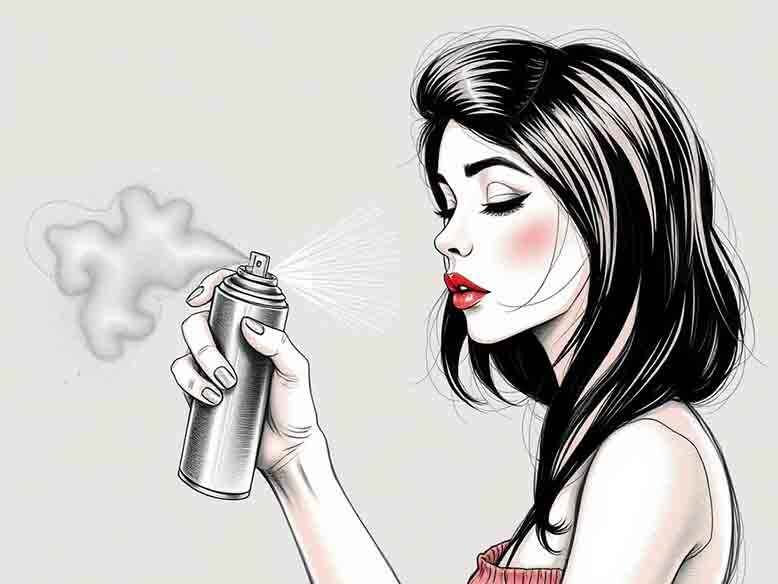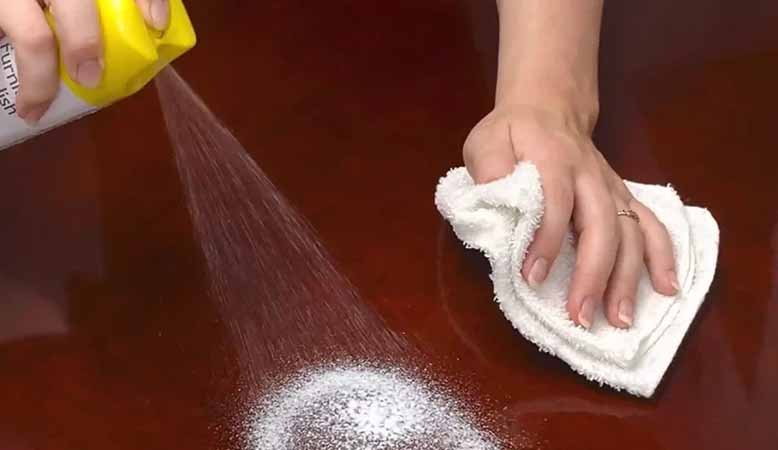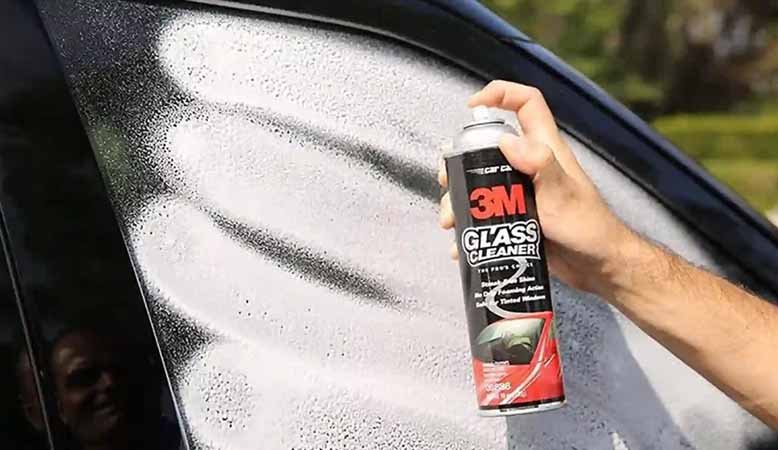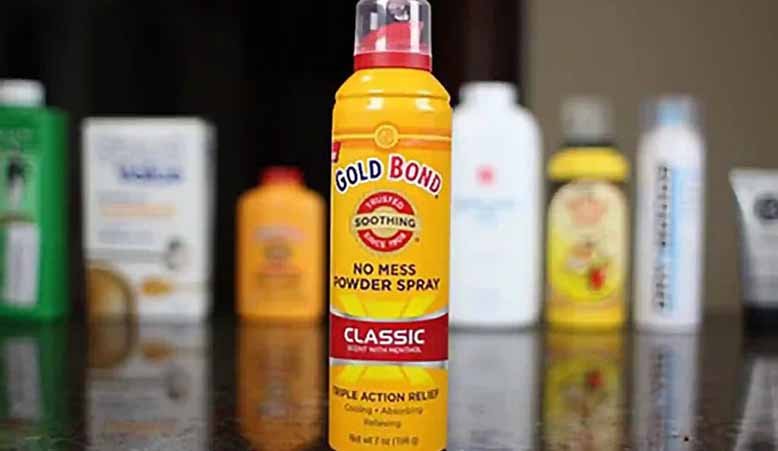Table of Contents
Today, I will share with you 5 case studies of DME(Dimethyl ether) applied in household aerosols.
From this article, you will learn about:
- The advantages of DME(dimethyl ether)
- The formulation of multiple products
- What you need to be aware of when using DME as a product propellant
Well, without further ado, let’s get right to the point.
Foreword
Dimethyl ether is successfully used in various aerosol products such as hair spray gels,personal deodorants, spray paints, etc. because it is miscible with water and has excellent solvent properties.

Previously, DME was less used in household aerosol products.
Traditional household aerosol products are water-based and use propane-butane as the propellant gas.
When using these products, there is one distinguishing feature.
You know what it is?
Yes, you have to shake the can before use. And often, a visible foam residue is left behind.

Their active ingredients, such as waxes and silicone oils, are often non-polar and do not miscible with water.
Of course, this does not become a significant problem.
Consumers have become accustomed to the fact that many household aerosol products require shaking before use.
However, even for these products, the use of DME has many advantages.
Using DME in water-based aerosol formulations eliminates the step of shaking the can before use.
Moreover, it can make the product easy to apply.
The consumer will receive constant and regular atomization, and consistent product quality, independent of the amount left in the can and the change in the composition of the can contents due to improper shaking.
Dimethyl ether can also lower the freezing point of water.

Water-based aerosols with 30% Dimethyl ether do not freeze even at -25℃(-13℉).
In fact, in many formulations, DME is an emulsion breaker (foam-breaker).
This is also an advantage.
The sprayed mist will no longer have visible foam and will not appear post-foaming but will be a clear, uniform, colorless mist.
This will give the product a completely new look and non-traditional performance characteristics in many cases.
I will address the application of DME in household aerosols in the following article from five categories of commonly used household aerosols.
1. Water-based Air Freshener

In order to reduce costs and eliminate “shaking before use” and to be suitable for “automatic timed spraying devices”, there is a need for single-phase water-based air fresheners.
The following are three types of single-phase water-based air fresheners.
| Ingredients | Weight(g) |
|---|---|
| Flavor | 0.25 |
| Cremophor RH40 | 1.00 |
| Sodium Benzoate | 0.05 |
| Aromox C12/w | 0.15 |
| Deionized Water | 68.55 |
| DME | 30.00 |
Formulation 1: Water & DME Type Air Freshener
| Ingredients | Weight(g) |
|---|---|
| Flavor | 0.50 |
| Cremophor RH40 | 1.00 |
| Sodium Benzoate | 0.05 |
| Aromox C12/w | 0.15 |
| Ethanol | 10.00 |
| Deionized Water | 48.30 |
| DME | 40.00 |
Formulation 2: Air Freshener with Latent Solvent
Note for preparation:
- Pre-mix the flavor with the solubilizer (Cremophor) first and then slowly add towater with stirring.
- Follow general anti-corrosion guidelines such as vacuum sealing of the valve,strict control of the amount of corrosive ions in the formulation, and theaddition of corrosion inhibitors, etc.
| Ingredients | Weight(g) |
|---|---|
| Flavor | 0.50 |
| Cremophor RH40 | 1.00 |
| Sodium Benzoate | 0.05 |
| Aromox C12/w | 0.15 |
| Ethanol | 8.30 |
| Deionized Water | 20.00 |
| DME | 70.00 |
Formulation 3: Extra Dry Air Freshener
Formulation 1 has high water content. You should choose a fine spray valve, nozzle, and cap. Since there is no other solvent, no need to cover the smell of the solvent, therefore, the amount of flavor is lower.
Formulation 2 uses ethanol as a latent solvent. The resulting mist is dryer than Formula 1.
Ethanol can be replaced by isopropyl alcohol.
In formulation 3, the amount of dimethyl ether is the highest, the generated mist is also the driest. 20% water is added to reduce its combustibility.
In the three formulations, you can do without adding a solubilizer. However, using a solubilizer makes the agent more stable and uniform before filling and more assured quality.
2. Furniture Polish

Furniture polishes are typically emulsion-based products containing waxes and/or silicone oils and water and odorless kerosene.
Dimethyl ether can be used to prevent foam generation.
| Ingredients | Weight(g) |
|---|---|
| Brazilian Brown Wax | 0.50 |
| ELFACOS ST 37 | 1.50 |
| Sodium Benzoate | 0.05 |
| Aromox C12/w | 0.15 |
| Odorless Kerosene | 15.00 |
| Deionized Water | 58.00 |
| DME | 25.00 |
Formulation 4: Silicone-free Furniture Polish with Wax
Formulation 4 is a wax-based product that does not contain silicone oil. It produces a very fine mist without generating foam on the surface being sprayed.
| Ingredients | Weight(g) |
|---|---|
| Silicone Oil 1000cps | 1.00 |
| ELFACOS ST 37 | 1.50 |
| Silicone Oil 350cps | 3.00 |
| Sodium Benzoate | 0.05 |
| Aromox C12/w | 0.15 |
| ELFACOS ST 9 | 1.50 |
| Odorless Kerosene | 12.50 |
| Deionized Water | 56.80 |
| DME | 25.00 |
Formulation 5: Silicone Oil Furniture Polish
You can refer to formulation 5 for products with silicone oil as the main ingredient.
Of course, you can use both wax and silicone oil in the same formulation.
The emulsion formulated by the above formula can be stable in the can for more than10min after shaking. This ensures the stability of the mist and product performance.
Even if the can is not sufficiently shaken before and during the use period, it is not a problem.
3. Multi-purpose Cleaners

We often use foam products to clean windows, bathrooms, TV screens, etc.
Foam products make it easy for the user to see where the product has been sprayed.
At the same time, foam products also make the user need to wipe off the foam after use.
Some products have a stable foam that is difficult to wipe off.
If you use a product containing dimethyl ether, it does not produce foam on the surface of use and is easy to wipe off.
| Ingredients | Weight(g) |
|---|---|
| Aromox C12/w | 1.00 |
| ELFACOS CT282 | 0.07 |
| Silicone Oil DC193 | 0.10 |
| Flavor | 0.05 |
| Deionized Water | 68.78 |
| DME | 30.00 |
Formulation 6: Universal Cleaner
Aromox C12/w used in Formulation 6 is coconut oil alkyl amine oxide. It is an excellent anti-corrosive agent and an emulsifier.
It can emulsify the non-polar material on the treated surface and make it easy to be wiped off.
Elfacos is polyoxyethylene alkyl ether. It is used as a thickening agent in formulations to prevent the rapid dripping of mist sprayed on vertical surfaces.
Water-soluble silicone oil helps to wipe off easily.
The final product is a clear, homogeneous, single liquid phase liquid that requires no shaking before use and can be packaged in tin cans.
4. Powder Aerosol Spray

In addition to flammable solvents in the aerosol production process, filling powder aerosols with concentrated materials also requires extensive safety precautions.
Static electricity generated by the flow of powder and flammable vapors can pose a safety hazard.
If water is present in the formulation, it is easier and safer to produce and fill.
The flammability of the product during the spraying process and on the object’s surface is also reduced.
Formulation 7 below is for stain removers, silver polishes, and similar products.
| Ingredients | Weight(g) |
|---|---|
| Acematt OK 412 | 7.50 |
| Sodium Benzoate | 0.05 |
| Aromox C12/w | 0.15 |
| Deionized Water | 22.30 |
| Ethanol | 20.00 |
| DME | 50.00 |
Formulation 7: Powder Aerosol Spray
To shorten the drying time, isopropyl alcohol or acetone can be used instead of ethanol.
Of course, acetone needs to be suitable only for its solubility properties and will not affect the object being treated or the surrounding objects of the product.
5. Water-based Insecticide Spray

Most water-based insecticide aerosols require “shaking before use” because they are mostly water/oil emulsions or micro-emulsions.
If Dimethyl ether and latent solvent are used, a single liquid phase insecticide aerosol maybe produced, as shown in Formulation 8.
| Ingredients | Weight(g) |
|---|---|
| 25% Pyrethrins | 0.80 |
| Piperonyl Butoxide | 1.60 |
| Sodium Benzoate | 0.05 |
| Aromox C12/w | 0.15 |
| Ethanol | 20.00 |
| Deionized Water | 32.40 |
| DME | 45.00 |
Formulation 8: Clear Single Phase Insecticide Spray
In formulation 8, isopropyl alcohol can be used instead of ethanol or use 96% ethanol.
Tests have shown that such formulations have sound biological effects. It sometimes has as lower knockdown effect on mosquitoes and flies than oil-based products, but the result is the same.
A clear single liquid phase product can be produced even without using a latent solvent.
| Ingredients | Weight(g) |
|---|---|
| D-cypermethrin | 0.80 |
| D-Phenothrin | 1.60 |
| Cremophor RH40 | 1.00 |
| Sodium Benzoate | 0.05 |
| Aromox C12/w | 0.15 |
| Deionized Water | 32.40 |
| DME | 45.00 |
Formulation 9: Single Phase Insecticide Spray without Latent Solvent
Formulation 9 does not use a latent solvent.
Tests have shown that this formulation also has good biological effects, but the knockdown effect is a little slower.
You need to choose the proper valve and nozzle to release a very fine particle size mist to maximize the effect of the product.
Dissolution technology is also important.
To dissolve the active ingredient in water, premix the active ingredient with Cremophor and then slowly add it to the water.
Both formulations have good stability.
The product is non-corrosive to uncoated tin cans if operated according to the corrosion prevention guidelines.
Conclusion
As can be seen from the above formulation examples, Dimethyl ether is an attractive propellant even in household aerosol products.
The water solubility and foam-breaking properties of Dimethyl ether make it possible to make aerosol formulations better, or at least to give it distinctive properties.
Then:
What products are you looking to do using DME?
What problems or questions did you encounter?

